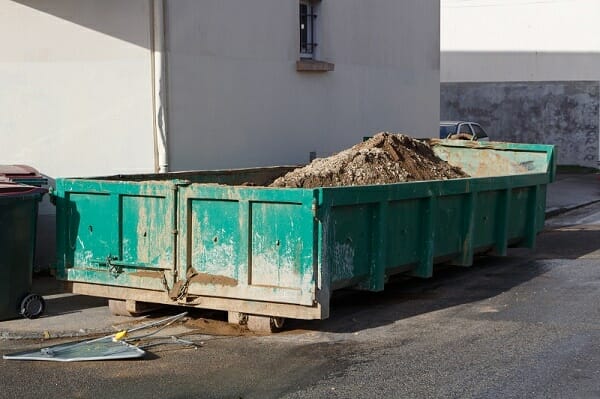- BY Evelyn
- POSTED IN Dumpster Rental
- WITH 0 COMMENTS
- PERMALINK
- STANDARD POST TYPE
We are all probably used to recycling by now. It is just a habit for most people, and we know it is good for the environment and generally a good idea. But did you know that many of us have been doing our recycling completely wrong for years? Contaminated recycling loads can cause major problems at waste disposal centers, so making sure you are following proper recycling habits is important. Here are a few of the most common mistakes that people make while recycling – learn what you can from them, and try to follow the correct procedures!
EWM Dumpster Rental proudly drops off rental dumpsters to all locations within Chatsworth, New Jersey and the greater Chatsworth area around Woodland Township.
Spacing Bins Too Far Apart
This is a simple psychological trick that is often an issue at workplaces and shopping centers. If you place recycling bins next to general waste bins, then people will make a decision and will usually recycle when possible. If people can only see one bin, such as in a situation when the recycling bin is in a completely different location from the trash bin, most people will just throw their trash into whatever is nearest, contaminating the recycling bin and throwing out perfectly good recyclables. The nearer you put the bins to each other, the better your chances are of encouraging more reliable recycling!
Recycling Plastic Bags
Disposable plastic bags may be made from plastic, but they can’t be recycled along with plastic recycling! They are made from a different type of plastic that is not recyclable, and throwing them in with other plastics can contaminate an entire bin. Instead, you can take them to your nearest recycling center and dispose of them in a specialized bin there.
Recycling Dirty Food Containers
Food containers can be tricky to recycle, particularly if they are made from cardboard. Grease from food can ruin entire loads of recyclables, so it is important not to recycle your greasy pizza boxes or dirty plastic takeout containers. Throw pizza boxes in the regular trash, and make sure your plastic takeout containers are thoroughly cleaned before recycling them.
Shredded Paper Scraps
If you are recycling paper, leave it whole. Small scraps of shredded paper are much harder to recycle because they are often small enough to fall through the gaps in the sorting machines, making a mess on the floor of the recycling facility. Certain recycling centers allow you to dispose of bags of shredded paper, but they have to be stored in paper bags clearly labeled as shredded paper and taken to a recycling center rather than your home recycling bin.
Not Recycling Colored Paper
A common error is making the assumption that only white paper can be recycled. This is a very common misconception, but it is entirely untrue. Any type of paper can be easily recycled, as long as it is clean. It does not matter what color your paper is. It can be recycled. This also applies to paper plates and paper bags, although it does not apply to waxed papers or paper with other types of coating on it. As a general rule, if you can tear a paper object, you can recycle it. If you can’t tear it, just put it in the trash!
Removing Bottle and Can Labels
This one is not a particularly big problem, as it is an unnecessary step rather than an error. Did you know that you do not need to take the paper labels off metal or plastic cans or bottles? You can just leave them on, saving you time and effort. This also applies to staples and other similar metal materials on recyclable paper and cardboard.

Recycling Dirty Cans
A much more serious risk with cans and bottles is failing to clean them properly. Food contamination is a major issue for recycling facilities, so it is important that you take the time to wash out your cans and bottles before recycling them. That applies equally to plastic, metal, and glass containers. If they are going in the recycling, they need to be clean!
Not Recycling Milk or Juice Cartons
You might think that tetrapak style milk and juice cartons, or screwtop cartons, cannot be recycled because of their plastic interior coating. Not only is this wrong, but it is also actually quite the opposite of the truth! The materials for these cartons are in very high demand, so it is actually particularly important that you recycle these cartons whenever possible. Just remember to wash them out thoroughly before you throw them in the recycling.
Number Codes
Different materials have different numbered codes, which can be used as an easy trick to identify what is and is not recyclable in your area. This is particularly useful for edge cases and things you are just not sure about, but many people do not know about the number code system. In most places, items numbered 1, 2, 5, or 6 can be easily recycled, while numbers 3, 4, and 7 are not recyclable and should just be thrown out.
Conclusion
These are some of the most common errors made by many people trying to recycle. It is easy to get things wrong in the world of waste disposal, even when you are trying your hardest to do the right thing. Keep an eye out for the errors listed above, and try to avoid them as far as possible in your daily recycling life. The more you can stick to good recycling habits, the more effective your attempts to recycle will be, and the more environmentally friendly and sustainable your lifestyle becomes!

 610-679-8449
610-679-8449